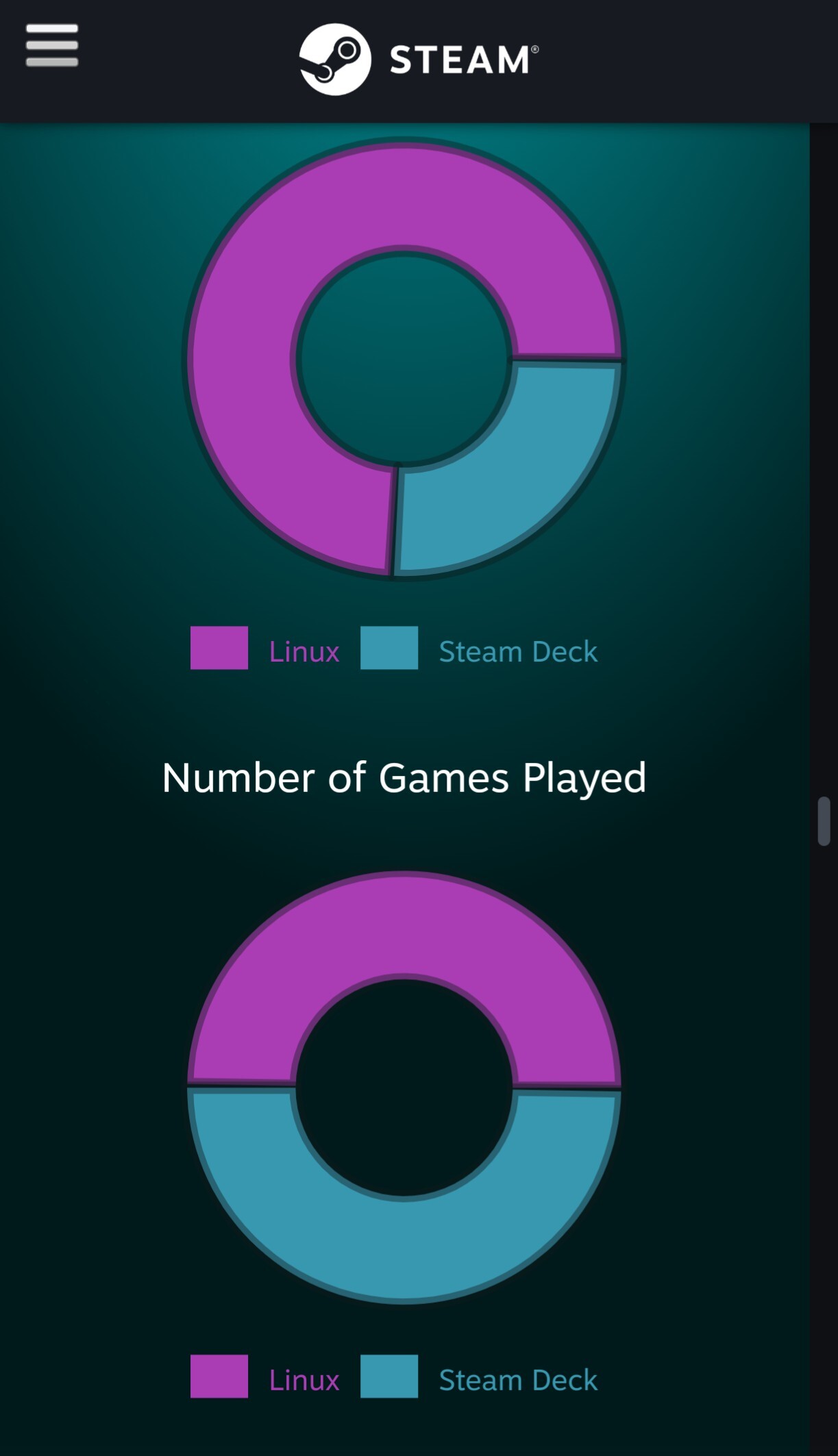

Based on screenshots - the status in Process tab is useless in most cases IMHO. Better telling would be CPU℅ telling proportion of sleep&running.
But overal nice looking, having tabs like flatpak and such that sounds useful.


Based on screenshots - the status in Process tab is useless in most cases IMHO. Better telling would be CPU℅ telling proportion of sleep&running.
But overal nice looking, having tabs like flatpak and such that sounds useful.


First year without Windows on the chart 😅



Chromebook V2?
Matrix


Funny :)
Hard to be sane with so many broken hardware implementations… 😅
Cudos for the Linux developers!


In the last I had very little success rate of those uninstall tools to actually do their job in full. A lot of time they delete some data but almost always they leave some trash behind.
And in the first place, I stopped trusting those external uninstall binaries, they could be designed to remove not only app data but remove your personal data, steal data from your PC or infect it (even if just to investigate why you are uninstalling).


One of the reason is that apps can place their files in any place they want so the app manager is not aware of those locations.
Even if it would know then the user still would need a way to remove the app without deleting data, imagine installing Developer IDE or chat app and uninstall process would remove your chats or projects. Imagine app dev accidentally set the “directory that store app data” to /home, it would be bad.
I not once uninstalled app to install different (for example older) version due to bugs in new one.
Having the logic allowing to optionally delete data would introduce additional complexity so most old package managers never introduced that feature.
But I agree that we should slowly introduce a way to to that. Some app managers that manage flatpaks now allow to delete user data after uninstalling app, this now could be done universally because apps installed using flatpak store their data in their own separated/dedicated directory that flatpak engine know about so (unless you give permissions to access other location) thw manager know where the app store data so can offer easy way to remove it.
Container is just a term for a set of isolation solutions bundled together.
Like file system isolation (chroot), network isolation, process isolation, device isolation…
One of them is ofc chroot, yes container use exactly the same chroot functionality.
So to answer your question, no, you don’t need full isolated container. You can use only chroot.
You just need to pass all required devices ( and match the driver version running in kernel with your files in container and (avoid) more than one app having full unrestricted access to GPU as that would result in issues (but dont know the details so can’t help you with that)).
You can use wayland in container but the easy way probably would require to give whole GPU to the container (but my knowlwdge is limited)
What I do know that this project is doing that: https://games-on-whales.github.io/
That also came up in search results that could help: https://unix.stackexchange.com/a/359244


The only reason ssh client would “hang” without any output is when it’s waiting for external key storage to allow access. It’s designed that way to give user some time to approve access to key storage.
It sometimes happen that the installed key storage is broken in a way that it fails to show user modal, for any reason (showing on wrong screen, wrong desktop, wrong activity, wrong framebuffer, …)
One solution (that you already did) is to change the SSH agent env variable to point to different key storage.
Another would be (if possible) to uninstall the broken key storage if you don’t use it. But it is sometimes needed/used by other apps.
It’s overall good to notify/open bug on your distro issue tracker to notify that some packages are missconfigured (maybe have missing dependencies) or conflicts with other ones.


I move unsubscribed emails to different folder, so next time they send me email I don’t feel bad in any way as I can confirm that I did tell them not to send me emails.
I only regret I can’t flag it as spam double time.
Gauguin - Sudoku-like game for Android (on F-Droid)
The instructions are not clear at first so it’s better to start the game a new with lower difficulty.


Yes, user should (at least try to) provide their own message, if not and it just post links to (their own?) pages then account should be marked as Bot IMHO.


CVEs found at: https://www.bleepingcomputer.com/news/security/linux-kernel-impacted-by-new-slubstick-cross-cache-attack/
Details of vulnerability: https://github.com/IAIK/SLUBStick


Immich
Wanting to spin-up but constantly delaying…
You can go to /var/log/apt/ and read the history.log as it will contain every single package that you did install/remove.
Based on that you can just restore it to working state by manually undoing the changes (removing installed, installing removed)


Looks like the installer and grub is confused about the hard drive order different in instaler and different while booting, both those drives could also have the same partition/drive ID making it confused, that could happen if you cloned/copied the drive in the past
I would say as a easy and safe solution
Not moved anywhere, so born and live in Poland, due to job and entertainment I speak and think both in Polish 🇵🇱 and English 🇪🇺. But more and more I catch myself thinking in English.